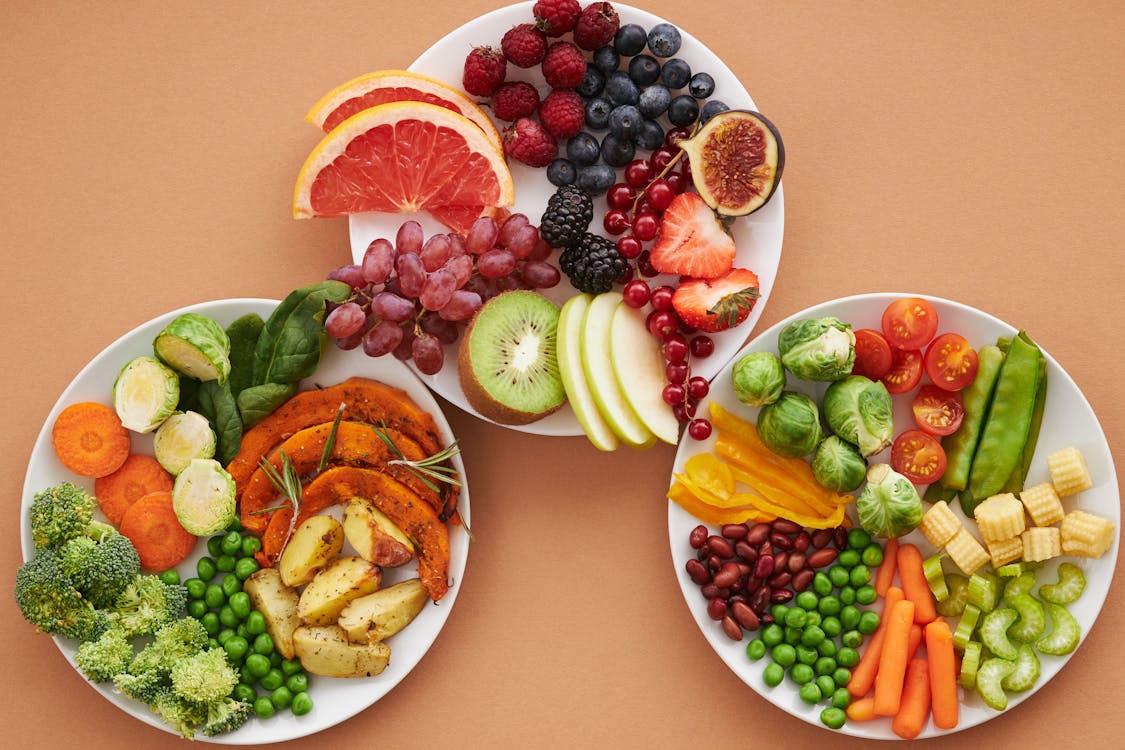9 Health Tips:
9 Health Tips
Within this section:
- Optimal Weight
- Taking in Nutritious Foods and Drinks
- Exercise
- Taking Care of Yourself
Reaching and maintaining a healthy body weight may be facilitated by consuming wholesome meals, drinks, and snacks as well as engaging in regular physical activity. Making healthy lifestyle decisions may also assist both men and women avoid certain health issues.
- Here’s a quick rundown of some healthy eating and exercise strategies.
- Make more whole grain choices. Try brown rice, oatmeal, and whole-wheat pastas and breads.
- Pick a variety of vibrant veggies. Diverse colored vegetables offer a multitude of nutrients. Try the
- tomatoes, sweet potatoes, squash, kale, collards, and spinach.
- Eat half of your lunch at restaurants and take the remaining food home.
- Take your family or friends for walks in parks, around a track, or around your neighborhood.
- Make it a point to exercise regularly.
- Aim for at least 150 minutes per week of moderate-to-intense aerobic exercise, such as brisk walking or riding.
- Work in little bursts of activity throughout the day if you’re short on time.
- Study more about how to move more and as well as your household!
Optimal Weight
In today’s environment, you are most definitely not alone if you find it difficult to control your weight. In actuality, obesity affects over 39% of adult Americans.1. Type 2 diabetes, renal disease, heart disease, and other chronic health issues can all be brought on by being overweight. You may be able to reduce your risk of weight-related health issues by setting objectives for your health.
1. How can one determine whether their weight is healthy?

You can use your body mass index (BMI) to assess if you are obese, overweight, or at a healthy weight. Your weight in relation to your height determines your BMI. To find your BMI, utilize this online calculator NIH external link. A BMI within the healthy range is 18.5 to 24.9. A BMI of 25 to 29.9 indicates overweight status. A person is deemed obese if their BMI is 30 or higher.
The size of your waist is another crucial measurement. Health issues may be more likely to arise in women and men with waist sizes more than 35 and 40 inches, respectively. It is more common for males than women to have additional weight around their bellies. Even those who are not overweight may be at risk for some health issues if they have excess fat, particularly in the abdomen.
2. What are the potential health hazards associated with obesity or being overweight?
- Being overweight could raise your risk
- stroke,
- heart disease,
- type 2 diabetes
- elevated cholesterol levels in the blood
- hypertension
- renal illness
- fatty liver disease issues during pregnancy specific cancer kind.
A number of things can contribute to weight gain, such as eating and drinking more calories than you need, getting too little sleep, and not doing enough exercise. The following are some variables that could affect weight and general health.
3. Make higher-fiber starchy carbs the main component of your meals.

A little more than one-third of your diet should consist of starchy carbs. Potatoes, bread, rice, pasta, and cereals are among them.
Select wholegrain or higher-fiber options, such as potatoes with their skins on, brown rice, or wholewheat pasta.
They might keep you feeling fuller for longer since they have more fiber than refined or white starchy carbohydrates.
With every main meal, try to incorporate at least one starchy food. Although starchy foods are thought to be fattening, the amount of carbohydrates they contain, gram for gram, only offers half the calories of fat.
When preparing or serving these kinds of foods, pay attention to the fats you add because that’s what raises the calorie count. For example, butter on bread and oil on chips and spaghetti with creamy sauces.
4. Consume a lot of fruits and veggies.

It is advised that you consume five or more servings of a range of fruits and vegetables each day. They can be juiced, dried, frozen, canned, or fresh.
It’s not as hard as it sounds to get your five a day. Consider slicing a banana on top of your cereal for breakfast or replacing your typical mid-morning snack with some fresh fruit.
Eighty grams is a portion of fresh, frozen, or canned fruit and vegetables. 30g of dried fruit is a portion, which is best consumed during mealtimes.
A 150ml glass of fruit or vegetable juice, smoothie, or both counts as one serving; however, since these beverages are high in sugar and might harm your teeth, keep your intake to no more than one glass per day.
5. Increase your fish intake, especially a piece of oily fish.

Fish is high in vitamins and minerals and a wonderful source of protein.
Try to have two servings of fish every week, one of which should be oily.
Omega-3 fats, which are abundant in oily fish, may help stave off heart disease.
fatty fish consist of:
- Herring,
- salmon,
- trout,
- sardines,
- pilchards,
- and mackerel.
Non-oily fish consist of:
- hake
- haddock
- plaice
- cod
- tuna
- skate
You have the option of fresh, frozen, or canned fish; however, keep in mind that canned and smoked fish may include a lot of salt.
Although there may be recommended limitations for certain types of fish, most individuals should be eating more fish.
6. Reduce sugar and saturated fat intake.

fat that is saturated
You should include some fat in your diet, but you should be mindful of the kind and quantity that you consume.
Saturated and unsaturated fats are the two main categories. An excessive amount of saturated fat raises blood cholesterol levels, which raises the risk of heart disease.
Men should consume no more than 30g of saturated fat per day on average. Women should consume no more than 20g of saturated fat per day on average.
Although children under the age of five should not have a low-fat diet, children under the age of eleven should consume less saturated fat than adults.
Numerous foods contain saturated fat, including:
- meat slices that are fatty
- sausages
- butter hard cheese
- cream cakes
- pastries
- lard pies
Aim to consume fewer foods high in saturated fat and more foods high in unsaturated fat, such as avocados, oily salmon, and vegetable oils and spreads.
Instead of butter, lard, or ghee, use a tiny quantity of vegetable or olive oil, or reduced-fat spread, for a healthier option.
When consuming beef, choose for lean cuts and trim off any fat that is readily apparent.
Since all forms of fat are high in calories, they ought to be consumed in moderation.
7. Consume no more than 6 grams of salt every day for adults.

Blood pressure can increase if you eat too much salt. Heart disease and stroke are more common in people with high blood pressure.
You can be consuming too much food even if you don’t add salt to it.
A significant portion of the salt that we consume is pre-packaged in foods like breads, sauces, soups, and cereals.
Utilize food labels as a means of reduction. A food is considered high in salt if it contains more than 1.5g per 100g.
A teaspoonful of salt, or 6g, is the maximum amount that adults and kids 11 years of age and older should consume each day. Even less should be provided for younger kids.
8. Avoid being thirsty

To prevent dehydration, you should consume a lot of water. It is advised by the government to consume six to eight cups daily. This is on top of the fluids you consume from your diet.
All non-alcoholic beverages are acceptable, but the healthiest options include water, milk with less fat, and drinks with less sugar, including tea and coffee.
Avoid sugar-filled soft drinks and carbonated drinks as they are heavy in calories. They harm your teeth as well.
Smoothies and unsweetened fruit juices are also heavy in free sugar. You shouldn’t have more than 150ml (a tiny glass) of fruit, vegetable, or smoothie juice in total per day. Recall to stay hydrated whether exercising or in hot temperatures.
9. Never miss breakfast.

Some people believe skipping breakfast may aid in their weight loss. However, a nutritious breakfast that is low in fat, sugar, and salt and high in fiber can be a component of a balanced diet and help you obtain the nutrients you require for optimal health.
Breakfast made with sliced fruit on top of semi-skimmed milk and wholegrain lower sugar cereal tastes good and is healthy.
Additional details
You can achieve the ideal balance of the five major food categories with the aid of the Eatwell Guide. The guidance indicates the proportion of food that should come from each dietary group.
Learn more about comprehending calories and maintaining a balanced diet.
